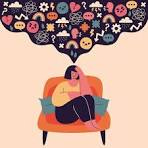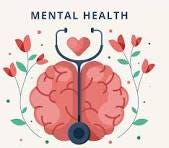The Mental Health of Our Children & Mental Health Scholarships.
Why Schools Still Struggle to Provide Enough Mental Health Resources for Students
Parents, are your kids okay? While the mental health of students remains a top concern of many in the education field, federal data reveals that it’s not all bad news—at the very least, it's not getting worse in all areas and potentially improving in some.
The National Center for Education Statistics released its biennial Crime, Violence, Discipline, and Safety in U.S. Public Schools report for the 2021-22 academic year. The report uses survey responses from principals of nearly 2,700 P-12 schools.
Nearly 90 percent of schools reported increased social and emotional support for students during the 2021-22 academic year.
However, 39 percent of schools reported that lack of access to licensed professionals and mental health funding was a significant roadblock to their efforts to support student mental health. During that same period, the U.S. Department of Education says that $275.7 million of emergency school funds were spent on mental health support for students and staff.
While conversations about the importance of student mental health have become abundant since the onset of the COVID-19 pandemic, Amir Gilmore points out that there are still many reasons why schools don’t have enough resources for the support framework they need. Gilmore is associate dean of equity and inclusion for student success and retention at Washington State University’s College of Education.
There are workforce barriers like the time-consuming mental health professional pipeline and a lack of availability of candidates in any one region. Many schools have just one mental health professional, Gilmore explains, who could be the only source of support for hundreds or thousands of students. That’s a recipe for burnout, he says and doesn’t touch on the need for counselors who are equipped to work with students of color or students with disabilities.
“We also are facing this kind of crisis where we don't have enough teachers in schools to work with students,” Gilmore says, “but we also don't have enough mental health professionals. Everyone is just really stretched thin.”
That invariably puts the onus back on teachers to handle student mental health issues. Gilmore posits that placing that responsibility on teachers’ shoulders adds to the strain of their day-to-day work rather than solves the problem. As a teacher, I can attest to this.
“Do we talk about mental health? Do we talk about SEL a lot in schools and teacher preparation programs? Yes, but the teacher cannot be everything, right?” Gilmore says. “They cannot wear so many different hats, and it's not a very sustainable process for them, either.”
Despite the recent effort and money put toward alleviating the mental health workforce’s shortages, “it will likely take years to fully ensure every student has access to [mental health] professionals and proper support,” according to Kelly Vaillancourt Strobach, policy and advocacy director at the National Association of School Psychology.
Her organization recommends schools maintain a 1:500 ratio of school psychologists to students. Still, Vaillancourt Strobach notes that the national average is more than double — going beyond a 1:2000 ratio in some school districts. In some regions, the shortage means that students who struggle to access care at school might likewise have trouble finding mental health professionals in their communities, she adds.
“We know many districts wanted to use ESSER funds to hire more staff, but workforce shortages prevented them from doing so,” Vaillancourt Strobach says, referring to the Elementary and Secondary School Emergency Relief Fund. “We are hearing that some districts are worried that they will not be able to sustain services or retain staff once ESSER funds have expired.”
The deadline to spend pandemic relief funds has indeed started the countdown to the end of some school-based services. With no additional mental health money allocated by the state of Texas, for example, Houston's school district will lose seven “intensive mental health specialists” after funds run out. In another part of the country, the “funding cliff” threatens a program in Denver that added mental health providers to 10 schools.
Another challenge is that even if society is generally coming to realize the importance of mental health, Gilmore adds, some educators—be they administrators or teachers—simply don’t buy into the idea that it needs to be a priority.
That extends to the community level. Not every voter or parent in a given school district is necessarily supportive of setting aside more money for student mental health services, he says, and its pedagogical cousin, social-emotional learning (SEL), has been politicized similarly to critical race theory.
“I think in those moments when we highly politicize things, we forget that it’s about students at the end of the day,” Gilmore says. By pushing back against social-emotional learning in schools, “some parents or some pundits could say, ‘We're doing this for students,’ but I would argue that we are just taking away a lot of more tools and resources for students to be themselves, to express themselves. In many areas in the life of a child or adolescent, they don't have many places to express themselves freely.”
Gilmore adds that mental health resources feel the squeeze of other factors outside of schools’ control, like the stress of inflation and whether local voters are receptive to increasing a district’s budget.
He has seen the issue play out in his city of Spokane, Washington.
“Some people in the community are like, ‘No, we don't wanna invest more money into schools. We don't want our taxes to go up,’” he says. “Can every taxpayer see the value of having mental health professionals [in schools]? Your mileage is going to vary.”
Just as the scramble to spin up remote learning highlighted school inequities in 2020, Gilmore says mental health resources — or the lack thereof — continue that now.
“I'm pretty sure that in school districts that have higher incomes, parents in the district will probably be able to fund that,” he says. “But we're going to run into the same issue that students and lower-income districts will not be able to have those mental health counselors. We're running into issues over race and class, and that’s what education is currently right now — it's very inequitable.”
Mental Health Scholarships for College
College may be difficult for students who have a mental disability. Mental health scholarships could relieve some of the stress of paying for college. These awards are usually available based on financial need, GPA, and diagnosis.
You may also find mental health scholarships for diverse educational goals. You may apply for the RJ Mitte Breaking Barriers Scholarship, which is funded by the Breaking Bad actor and intends to help high school and college students who have a mental or physical disability. There will be one winner for the $1,000 award this year.
There are also scholarships for graduate students with mental health conditions as well. The Disability Care Center offers an annual award of $500. To apply, you must write a 500 to 1,500-word essay on how your hardship affects your daily life.
Some providers offer mental health scholarships for specific disabilities. The LEAD Foundation Dottie R. Walker Scholarship provides $1,000 to those with ADD/ADHD. To be eligible, you must be a Colorado high school senior willing to serve as a role model for others.
10 SCHOLARSHIPS FOR MENTAL HEALTH YOU SHOULD APPLY FOR in 2024
These ten mental health scholarships are available for many college students.
Pride Foundation Associates in Behavioral Health Scholarship
RJ Mitte Breaking Barriers Scholarship
Pine Cone Foundation Scholarship
Behavioral Health Academic Scholarship Program
Buckfire & Buckfire Disability Scholarship
Richard Louis Caplan Memorial Scholarship for Mental Health
Brea Little Moore Memorial Scholarship
Dennis Elroy Barry Memorial Scholarship
IBPF Essay Contest
KFM Making a Difference for Autism Scholarship
Which Mental Health Conditions Could Get You Awards?
There are a range of mental and emotional issues that may qualify you for mental health scholarships. You also have to check the provider’s eligibility criteria and application info.
Not everyone has the same experience with mental illness. Almost one in five adults in the U.S. suffers from it, according to the National Institute of Mental Health.
For some, the diagnosis is “mild”. These conditions include:
Depression
Eating disorder (E.g. anorexia, bulimia)
Anxiety disorders
Learning disability (E.g., ADHD, autism)
Others may also suffer from a severe form of psychiatric disorder that limits how they function. These include:
Post-traumatic stress disorder (PTSD)
Bipolar disorder
Schizophrenia or schizoaffective disorder
ARE THERE SCHOLARSHIPS FOR STUDENTS STUDYING MENTAL ILLNESSES?
Mental health scholarships are also available for college students who plan to major in behavioral health or substance abuse.
The Behavioral Health Academic Scholarship Program is one of them. It is for U.S. high school seniors who major in behavioral health sciences. You may study counseling, psychology, social work, nursing, or a related field.
There’s also the Future Counselors of America Scholarship. It is for students majoring in psychology and planning to go into counseling. You may qualify if you’re in an undergraduate program or pursuing a graduate degree.
Do you hope to impact policy about a mental health condition? If so, check the Mental Health System Reform Scholarship. Eligibility includes a 3.0 GPA. This mental health scholarship is open to both undergrad and graduate students.
WHAT ORGANIZATIONS HELP STUDENTS WITH MENTAL ILLNESS AND PROVIDE FINANCIAL AID?
Both businesses and nonprofits set aside scholarship funds for students with mental disabilities. When searching for these mental health scholarships, check local sources. The John Lepping Memorial Scholarship is for students in New York, New Jersey, and Pennsylvania. If you have a physical disability, autism, or PTSD, you may qualify.
Also, look for scholarships for mental health related to your major. Microsoft aims to empower and enable people with disabilities. The Microsoft Disability Scholarship is for 12th graders who are passionate about tech and high school seniors who plan to attend a trade school or accredited college. These $5,000 mental health awards are renewable for up to four years.
Many nonprofits also offer financial aid to reward volunteer efforts. The JED Foundation supports students who struggle with mental health. Undergraduate students who raise awareness for mental health issues on campus may qualify for their $3,000 scholarship award.
6 HELPFUL TIPS TO TAKE CARE OF YOUR MENTAL HEALTH IN COLLEGE
It’s essential to take care of your well-being so that college plus any other issues you face don’t derail you or boost your anxiety level. Check out these helpful suggestions.
1. You are not alone, so remember to find support.
Many community colleges and four-year schools offer counseling services. There might also be online resources, a student hotline, and workshops that teach you how to manage stress and not panic.
2. Communicate with friends and family.
Build a network of people you trust. Family, friends, a professor, advisor, fraternity brother, or sorority sister are good contacts to contact.
Remember to stay in touch with your friends and family if you're also away at school. Have that visit over FaceTime or Skype to maintain these tried and genuine relationships.
3. Schedule your time.
Sticking to a schedule and routine can be a great comfort. That means going to sleep and waking up at around the same hour every day. Also, could you try to put your schoolwork and classes into your calendar? Don’t forget to set a reminder to apply for mental health scholarships.
4. Explore new things.
College is also a time to try a new activity or hobby. It could be a club or team to join that you find interesting.
5. Stay fit and eat healthy.
Exercise releases endorphins, which are chemicals in the body that combat stress. Find some kind of movement (including yoga and possibly meditation). Also, remember to eat healthy food and get enough rest.
6. Check in with yourself.
A diary is a helpful way to manage your moods and inner health. If you notice a dip in energy, performance, or feelings, please don’t hesitate to seek help.






